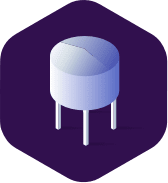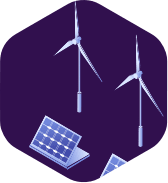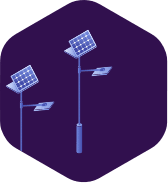Waste bins equipped with IoT sensors and analyzes of this data are a hidden value for recycling. The reduced cost of sensors means that the Internet of Things (IoT) is moving rapidly into new areas of commercial and residential real estate. While smart energy meters, intelligent lighting controls and digital water meters are nothing new, the number of sensors in the field is expected to grow exponentially over the next five years, offering smarter innovations in all areas such as recycling and waste management.
The commercial and industrial sector is expected to account for almost half of all new connected devices between 2018 and 2030. According to numerous estimates, the world population will reach 9 billion by 2050, with 75% of the population living in cities.
As more people equate to more waste, urban areas will generate huge amounts of different types of waste than other residential areas. Therefore, the implementation of a smart, safe, green and sustainable urban center is the only way to achieve an important goal, which is the collection, transport, disposal, recycling and monitoring of waste.
A smart bin is a waste or recycling bin, equipped with a sensor that can detect:
The bin filling level
Collection data
The existence of fire
The slope
The temperature etc.
The solution
IANIC’s smart sensor is an IoT product which makes your waste collection intelligent and cost-effective. The device has many advantages over currently available solutions in the market. The device is more rugged, has a 40% smaller body design and has an adjustable transducer to fit 90% of bins. The moveable transducer tunnel allows the device to be mounted in different orientations and the installation takes around 10 minutes.
The smart sensor is fully compatible with the most widely used LPWAN technologies like Lorawan, Sigfox and Narrowband IoT (NBIoT). LPWAN technologies prolong device life and wireless range, leading to several years of operation on a single battery.
The sensor’s hardware design complies with extremely low power and EMI proof technology standards. With an extremely low sleep current and low average transmission current, the device’s life on a single (Lithium Thionyl Chloride) battery is more than 7 years (dependent on number of transmissions). Hardware stability makes the sensor a non maintenance device.
The smart device runs on a very flexible and robust firmware. Finely designed and
scheduled firmware runs multiple processes in parallel at power-optimized CPU speed,
providing high speed and high performance at a very low battery consumption.

Water
Data-driven water flow

Energy
Less emissions, more power

Lighting
Centrally controlled lighting grid

Waste Management
Optimized collection services for cleaner cities

Environment
Less air, noise and water pollution

Mobility
Faster, safer, cleaner getting around


